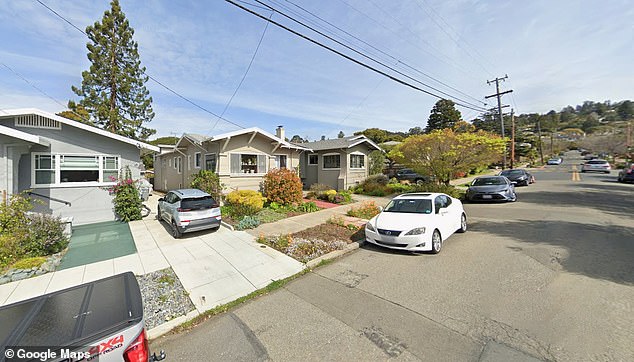A neighborhood in northern California that was once home to bustling block parties, summer barbecues and a vibrant social scene has been dulled by its aging population.
Named after the surrounding leafy nature, Thousand Oaks in Berkeley, California, sits amid rolling hills and boasts sweeping views of the Golden Gate Bridge.
But as a result of the median age of its roughly 7,000 residents rising from 37 in 1980 to 55 in 2023, the once lively west coast community has grown much quieter.
Locals who used to thrive mingling at gatherings are now more inclined to stay home – and the impact is causing businesses to struggle while diversity fades.
Younger residents worry about being priced out of the idyllic neighborhood.
‘By not evolving with the times in some ways, Thousand Oaks actually lost something really special,’ Brenden Millstein told the San Francisco Chronicle.
The Bay Area’s sky-high cost of living, as well as its property tax breaks that incentivizes the aging homeowners not to leave, means the population isn’t getting any younger.

The vibrant social scene in Thousand Oaks has been dulled by its aging population

Locals who used to thrive mingling at gatherings are now more inclined to stay home
Effectively, young people cannot afford homes and older generations refuse to move out of them.
The California Department of Finance predicted that at this rate, the percentage of elderly residents in the Bay Area will hit more than 30 percent by 2060.
Even if homeowners choose to move or even die, the middle class is being priced out.
The median value of a Thousand Oaks property is $1.6 million, according to Niche. The median household income is $184,864.
Just 28 percent of Thousand Oaks families have children. Many of the existing young people fled during the pandemic or to find cheaper homes elsewhere.
UC Berkeley’s Urban Displacement Project director Tim Thomas told SF Chronicle, ‘The middle-class dream of homeownership here is dying.
‘The whole idea of the ‘idyllic neighborhood’ is not really the goal anymore in this area. Ultimately, what ends up happening is segregated spaces.’
Diversity in Thousand Oaks has steeply declined. In 2023, the census showed zero Black families.
Even local schools are feeling the effects. Thousand Oaks Elementary reported an enrollment decline that forced officials to end the school’s drama program and vacated multiple classrooms.

Younger potential homebuyers fear they will be priced out of the idyllic neighborhood
Declining birth rates and longer life expectancy have left many neighborhoods stagnant throughout the country.
According to Fortune, the homebuying landscape will remain abysmal for young buyers. Mortgage rates show that most Americans need to make six figures to afford a home.
But urban migration experts like Richard Florida are still optimistic.
‘At some point, the housing market will come back down to Earth. History has taught us that it’s inevitable.
‘When that day comes, communities like Thousand Oaks will finally start to reclaim that middle-class charm that means so much to them.’
